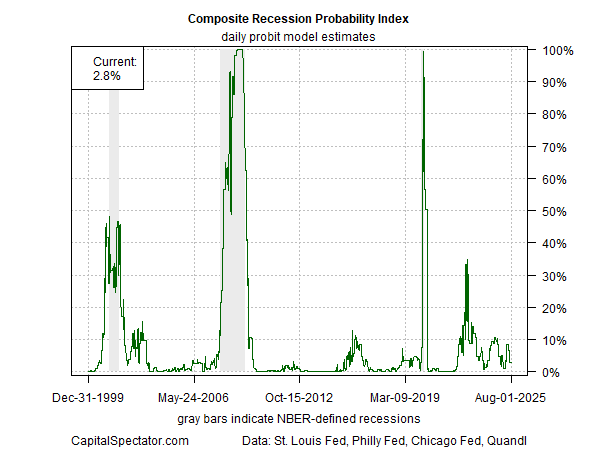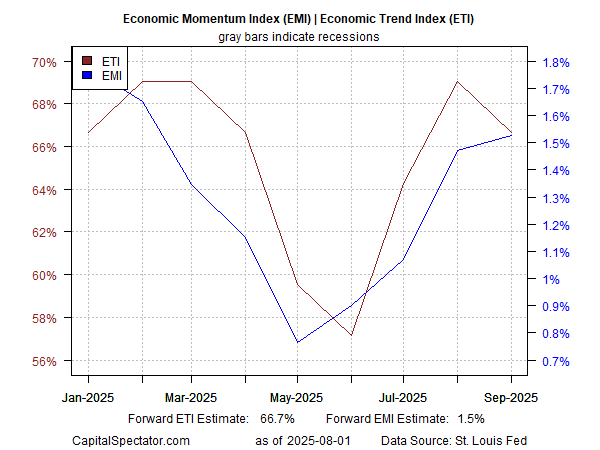S&P 500 jumps after Fed delivers third rate cut of the year
Judging by the headlines, it’s tempting to conclude that a US recession is imminent. Looking at a broad array of macro indicators, by contrast, still leaves room for debate.
Moody’s Analytics chief economist Mark Zandi on Sunday warned that “The economy is on the precipice of recession.”
Luke Tilley, chief economist at Wilmington Trust, advised: “We are in a broad economic slowdown. Whether it translates to a recession or not is the question that I’m asking now. The labor market is key, and it’s hard to gauge what’s going to happen.”
The guessing game for predicting the $24 trillion American economy is in full swing, again. It’s a seductive game, but one with a history of many false signals. There’s always another recession lurking, but the timing is, to put it mildly, is challenging.
Zandi, for instance, advised in March: “The recession risks are uncomfortably high and they’re rising.”
In fact, the track record for forecasting the business cycle tends to be little better than a coin flip. The reason: there are countless variables that factor into economic activity, a complication that often surprises even the smartest economists.
But rather than abandoning economic analysis entirely, The Capital Spectator prefers to stick with a time-tested method that 1) nowcasts current conditions and 2) makes cautious assumptions from that basis about the next 2 to 3 months. I’ve developed and refined this process over the years, and update the analysis in a weekly newsletter: The US Business Cycle Risk Report.
The current issue highlights that the current probability estimate that the US is now in an NBER-defined recession is roughly 3%. This calculation is based on a wide variety of third-party and proprietary indicators that’s summarized in the Composite Recession Probability Index (CRPI). It’s not flawless – nothing is – but it’s proven to be a valuable tool for cutting through the noise. 
The limitation of CRPI is that it reflects current conditions, which are based on the latest updates of economic numbers, which arrive with a lag. Although it’s possible to develop reasonably accurate estimates of what’s happening now (or what’s happened in the very recent past), the key question is where the economy’s headed?
The short answer: No one knows. Full stop. But the US economy, like a ship, isn’t easily or quickly diverted from its path (short of an exogenous shock). As a result, we can make some cautious assumptions and run analytics to developed an estimate of what the next couple of months look like — a calculated risk.
That’s where a set of proprietary indicators step in – the Economic Trend and Economic Momentum indexes. In each issue of the newsletter, I run an econometric model that projects the likely path for the indexes into the near-term future. The current analysis is shown in the chart below, which highlights forward estimates through September.

The main takeaway: Both indicators remain above their respective tipping points that separate growth from recession – 50% for ETI, 0% for EMI. At the same time, the indicators appear to be peaking. The implication: trouble could be brewing for the fourth quarter. But that’s just a guess, and it should be taken with a hefty dose of skepticism.
The appetite is infinite for knowing what the economy will do beyond the near-term window, but high confidence estimates are limited to the next two months at best. On that score, an NBER-defined recession looks unlikely in the immediate future. Tomorrow, on the other hand, is another day, and so the best we can do is routinely update the analysis when new data arrives.
